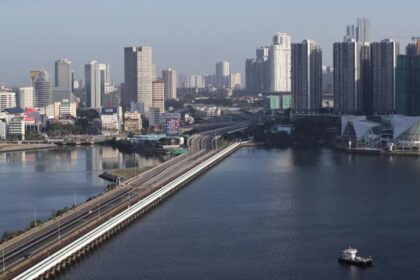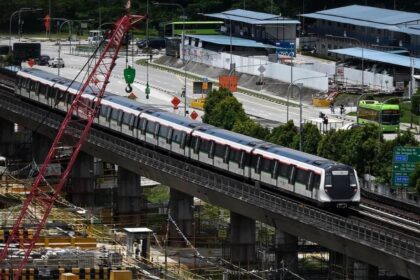Why this crop sits at the center of land use debates
Palm oil is in half of the packaged products on supermarket shelves and in millions of household kitchens. Its importance is not only about versatility. It is about land. Oil palm delivers far more oil per hectare than any other major oilseed crop, which makes it central to a world that needs more food from limited land. Brazil is now entering this market as a producer, bringing fresh attention to how palm oil can grow without a new wave of forest loss.
- Why this crop sits at the center of land use debates
- Why palm oil is the most land efficient edible oil
- The deforestation record and a turning point
- Brazil’s test case: expansion without clearing forests
- Certification, traceability, and corporate pledges
- Technology and genetics aim to cut footprint
- Biodiversity and community rights remain the test
- Climate change threatens yields without adaptation
- What to Know
Science backs the land efficiency point. Mature oil palm typically yields 4 to 5 tonnes of oil per hectare in tropical belts and the trees keep producing for about 30 years. Globally, around one tenth of land planted with oil crops is oil palm, yet it produces more than a third of the world’s edible vegetable oils. Replacing palm oil with alternatives like soybean, sunflower, or rapeseed would require multiple times more land, which would push agriculture into natural habitats again.
The critique is real. Palm oil expansion has been linked to deforestation, peat drainage, and fires, especially in Southeast Asia. Conservation groups estimate palm oil’s share of tropical deforestation at about 5 percent and roughly 2.3 percent of deforestation worldwide. That is serious in biodiversity hotspots, even if other commodities and land uses have larger footprints. The question has shifted from whether palm oil can be sustainable to what it takes to make it so, at scale and with credible proof.
As demand for food and consumer goods grows, the path to lower impacts runs through higher yields on existing land, stronger safeguards for forests and peatlands, cleaner processing, and better livelihoods for smallholder farmers who grow a large share of the crop. Brazil’s early moves, recent trends in Indonesia and Malaysia, and a wave of policy and technology shifts are putting those ideas to the test.
Why palm oil is the most land efficient edible oil
Oil palm’s biology explains its advantage. Each tree bears large fruit bunches year round under stable tropical conditions. Efficient photosynthesis and oil-rich fruit drive yields that dwarf temperate oilseeds. A recent scenario analysis by researchers comparing Indonesia’s oil palm, Brazil’s soybean, and Germany’s rapeseed projected that by 2040, under ambitious improvement assumptions, oil palm could reach about 4.8 tonnes of crude oil per hectare, compared with roughly 3.1 for soybean and 2.6 for rapeseed. That difference translates into millions of hectares of avoided land conversion if demand is met by palm rather than alternatives.
How yields and long life cycles save land
Oil palm’s 30 year productive life reduces the frequency of land turnover, soil disturbance, and inputs compared with annual crops. The tree canopy also shades soil, reducing erosion and evaporation. When managed well, that stability supports incremental yield gains through better planting material, fertilization, and harvesting practices. The most productive estates already surpass 6 tonnes per hectare, and closing the gap between average and best practice remains the single biggest land saving opportunity.
Why swapping palm oil for other oils can backfire
Conservation organizations caution against boycotts. Alternative oils need larger areas, which can shift deforestation pressure to new frontiers. In other words, the choice is not palm oil versus nothing. It is palm oil produced under strict no deforestation rules, or more land-demanding crops with their own impacts on grasslands, savannas, and forests.
The deforestation record and a turning point
Palm oil drove extensive forest conversion in the 1990s and 2000s as plantations spread across Indonesia and Malaysia. Those years brought haze episodes from fires on drained peatlands, habitat losses for orangutans and other endangered species, and rising greenhouse gas emissions. Recent evidence shows progress. Deforestation linked to palm oil has fallen to its lowest level in years in leading producer countries, even during periods of high prices. Several reasons explain the shift.
What share of deforestation comes from palm oil
Global agriculture remains the top driver of forest loss. Within that, palm oil accounts for a modest slice of total global deforestation but can have disproportionate ecological impact where it overlaps with high carbon and high biodiversity landscapes. Keeping new planting out of primary forests, intact peat, and other conservation areas is the decisive line between a low impact and high impact supply.
Why rates have fallen in Southeast Asia
Governments tightened rules through permanent or long standing moratoria on clearing primary forests and peatlands. Certification schemes strengthened. Corporate buyers adopted No Deforestation, No Peat and No Exploitation commitments and backed them with traceability and supplier screening. Satellite monitoring now provides near real time alerts when land clearing begins in sensitive areas. Together, these measures show that commodity growth and forest protection can be decoupled when policy, market pressure, and transparency line up.
Brazil’s test case: expansion without clearing forests
Brazil’s potential for oil palm is large across parts of the eastern Amazon and coastal belts suitable for the crop. The government’s Sustainable Palm Oil Production Program, launched in 2010, aimed to direct expansion to non forest lands using agro ecological zoning. An independent assessment of Pará state found that from 2006 to 2014 the oil palm area more than tripled to roughly 219,000 hectares. About 91 percent of new plantations replaced pasture, and the direct conversion of intact forests fell sharply after the program began, to below 1 percent of new area.
Those outcomes show how zoning and policy alignment can limit direct deforestation. They also highlight practical constraints. Development lagged behind land suitability estimates because of high establishment costs, limited local know how, and infrastructure gaps. Another study that mapped environmentally suitable land with a fuzzy GIS approach concluded that available sites are often fragmented and that improving yields on existing plantations, restoring biodiversity, and supporting smallholders may deliver better results than large scale new estate development.
Where expansion could proceed
Priority areas include degraded pasture and previously farmed lands outside protected areas, high conservation value zones, and peat. Directing investment to these sites, and conditioning it on strong social and environmental safeguards, can keep forest pressure low while creating jobs and new income streams. The evidence from Pará suggests it is feasible, but only with careful enforcement and monitoring.
Certification, traceability, and corporate pledges
Independent standards and corporate policies now shape how palm oil is grown and traded. The Roundtable on Sustainable Palm Oil (RSPO) sets criteria for growers and supply chain actors. National schemes, including the Malaysian Sustainable Palm Oil standard and the Indonesian Sustainable Palm Oil standard, complement RSPO and are embedded in public policy. New import rules in major markets add further incentives. The European Union Deforestation Regulation prohibits placing palm oil on the market if it comes from land deforested after December 31, 2020, and requires geolocation-based proof of origin.
RSPO and national standards
About one fifth of global palm oil production is certified under RSPO. Malaysia made its national standard mandatory in 2020 with a cut off date for new plantings at the end of 2019. Indonesia established a multi stakeholder platform to guide sector reform and a national action plan to strengthen smallholder inclusion and governance. These frameworks are strongest when buyers demand certified or verified deforestation free oil, regulators enforce land laws, and producers have access to finance and technical support to meet the bar.
What big buyers and traders are doing
Major traders and food companies have adopted NDPE policies and public dashboards that track progress and grievances. One global trader states it will not source from suppliers that clear forests, drain peat, or exploit workers, and it regularly reports on supplier compliance and corrective actions. A large food manufacturer reports that all crude palm oil and palm kernel oil it buys are covered by certification or credits, with traceability to the mill at 99 percent and to plantations at more than 90 percent. It uses satellite monitoring to verify that sourcing regions remain free of recent deforestation, publishes supplier lists, and runs programs on labor rights, land tenure, and conservation in sensitive landscapes.
Technology and genetics aim to cut footprint
Monitoring tools have transformed transparency. High resolution satellites, machine learning, and public datasets now spot land clearing even under cloud cover. Governments in producer countries are building traceability platforms that register plantations and link permits, maps, and supply records. This helps companies comply with new import requirements and lets auditors verify claims with objective data.
Better trees, better practices
Yield growth reduces land pressure. Genome mapping and selective breeding have produced higher performing planting material that can lift yields by double digit percentages. One large producer reports breeding lines that deliver about 20 percent more oil per hectare. Precision nutrient management, integrated pest management, and improved harvesting routines add further gains. Extending these techniques to smallholders, who manage a large share of plantings, is essential. Training, access to finance, and simplified certification pathways help them raise productivity without expanding into forests.
Cutting mill emissions and avoiding peat
Palm oil’s greenhouse gas footprint is dominated by land use change on peat and methane from mill effluent. Ending new planting on peat and rehabilitating drained peatlands removes the biggest emission source. Methane capture systems at mills turn wastewater gas into biogas for energy, cutting emissions per tonne of crude palm oil by large margins. Scenario modeling suggests that if mills capture methane and peat conversion is phased out, palm oil’s emissions intensity could approach or even beat competing oils by around 2040. A focus on using co products and by products for energy or feed also improves the balance.
Biodiversity and community rights remain the test
Sustainable palm oil must protect wildlife corridors, riparian buffers, and high conservation value and high carbon stock areas. Set asides and restoration inside and around estates can keep landscape connectivity for species and safeguard water quality. Producers in parts of Southeast Asia participate in large conservation initiatives across borders, such as programs that conserve vast forested areas while supporting forest dependent communities.
Certification is necessary but not sufficient
Grievance cases show why robust enforcement matters. Civil society groups in West Africa have documented community rights violations and forest loss linked to plantation projects and have pressed certification bodies to maintain moratoria until remediation plans are complete. These cases underscore that standards must be backed by transparent monitoring, timely sanctions, and meaningful engagement with affected communities. Support for smallholders is also crucial. While deforestation from large industrial estates is declining, clearing by smaller operators has risen in some areas. Training to increase yields, access to legal land titles, and fair purchasing contracts help reduce pressure to clear new areas.
Climate change threatens yields without adaptation
Oil palm is sensitive to heat, water stress, and disruption in rainfall timing. Reviews of recent science link rising temperatures and erratic precipitation to lower yields, more pest and disease outbreaks, and higher production risk. That burden falls hardest on smallholders. Without adaptation, climate stress could shrink the area that is suitable for oil palm and increase volatility in output.
Adaptation priorities for producers and policymakers
Breeding climate resilient varieties is a top priority, paired with water management investments such as drainage and irrigation controls that handle heavier rains and longer dry spells. Climate smart practices, including mulching, ground cover crops, agroforestry edges, and precision inputs, make plantations more resilient. At policy level, strong land use planning, forest and peat protection, and incentives for methane capture and renewable energy at mills reduce emissions while maintaining productivity. Research also points to gaps that need attention, including better data on smallholder adaptation and long term soil health.
What to Know
- Oil palm uses a fraction of the land required by other oil crops and can produce 4 to 5 tonnes of oil per hectare, with scenarios showing higher yields by 2040.
- Replacing palm oil with alternatives would likely increase total land conversion and shift pressure to other ecosystems.
- Palm oil’s share of tropical deforestation is estimated at about 5 percent, with global share around 2.3 percent.
- Deforestation linked to palm oil has fallen in Indonesia and Malaysia due to moratoria, stronger laws, certification, and corporate zero deforestation policies.
- Brazil’s zoning approach in Pará pushed most new palm planting onto pasture, with direct forest conversion dropping to below 1 percent after the program began.
- RSPO, national standards, and the EU Deforestation Regulation are driving traceable, deforestation free supply chains.
- Major companies report high levels of traceability and have No Deforestation, No Peat and No Exploitation policies, backed by satellite monitoring and grievance systems.
- Genetic improvements, better agronomy, and methane capture at mills can raise yields and cut emissions intensity.
- Biodiversity set asides, community rights protections, and stronger enforcement are essential to sustain progress.
- Climate change threatens productivity, making resilient varieties and climate smart agriculture urgent priorities.











